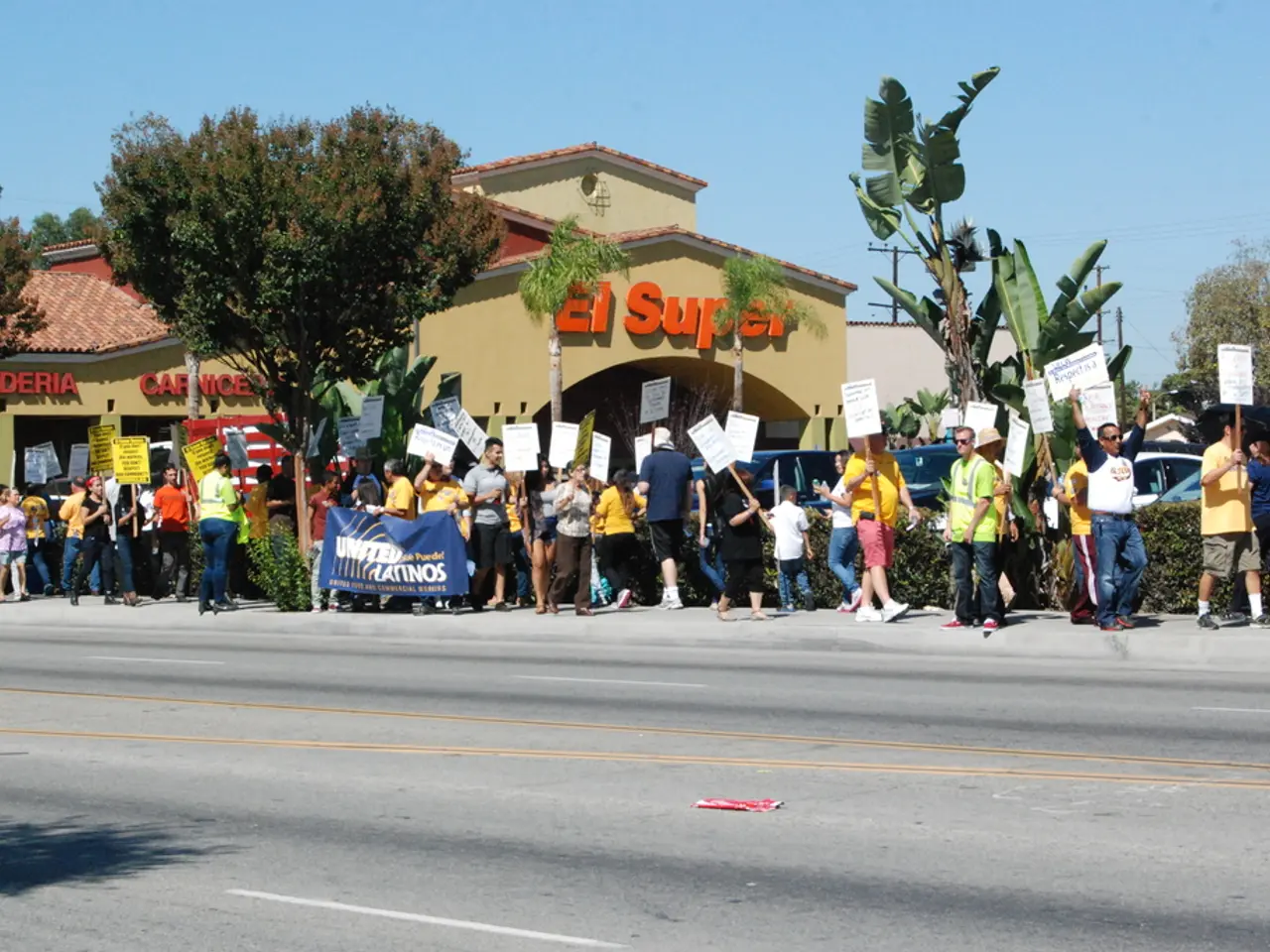Political Parties and Candidates Under Scrutiny in the Digital Arena
In the lead-up to the 2021 German federal election, political parties showcased varying approaches to Google visibility, Google Ads investment, and social media presence, each tailored to their respective audiences and ideological standings.
Google Visibility and Online Discourse:
The Alternative for Germany (AfD) stood out with a higher online content visibility on specific political topics, such as climate change, compared to other major parties like SPD and CDU/CSU. This was evident in various domains, including parliamentary speeches and online channels like Telegram, where AfD produced more than five times as many matches related to its discourse themes [1]. This suggests AfD's prominence in digital text-based presence.
Google Ads Investment:
Detailed data on Google Ads investment by German parties during the 2021 election is not readily available. However, a broader examination of Google's politics-related ad policies and controversies indicates that political advertising on Google platforms is subject to strict regulations, with party ads sometimes facing restrictions or removals if policies are violated, implying parties had to navigate these rules carefully [2].
Social Media Presence and Strategies:
AfD capitalised on Telegram, utilising channels operated by its youth wing and state parliamentary factions, suggesting a strategy to use less mainstream but highly engaged platforms for direct communication [1].
Other parties, such as CDU, campaigned on platforms emphasising anti-immigration themes, reflecting targeted messaging aligned with voter concerns in certain demographics [3].
The overall use of social media in far-right and conservative parties like AfD mirrored global trends, where digital platforms and messaging services (e.g., WhatsApp) were crucial for spreading populist, conservative, and sometimes authoritarian rhetoric [4].
Parties employed comprehensive candidate outreach and mobilisation campaigns on social media and digital platforms. Researchers analysed the impact of negative campaigning on turnout in state elections related to the 2021 period, indicating that campaign messaging strategies were technologically nuanced and targeted [5].
Social Media Performance:
- The SPD has a strong presence on both faction and party accounts on Facebook, with 70,000 followers and 157,000 reactions on the faction account, and 137,000 followers and 535,000 reactions on the party account.
- The SPD also has the highest Google visibility, with a score of 2.52.
- The Greens lead on Instagram with 317,000 followers and 2.2 million reactions, while Robert Habeck has 349,000 followers and 1.3 million reactions on the official Chancellor account on Instagram.
- Weidel leads the YouTube ranking with 279,000 subscribers, and the AfD achieves the highest reach on YouTube with 508,000 and 315,000 followers, and 15.7 million and 3.1 million views. Habeck reaches fewer followers but almost the same number of video views as Weidel on YouTube.
- The Greens invest the most in Google Ads, spending 376,000 euros.
- The AfD does not appear at all for the keyword 'pension' on Google.
- The SPD gains rapidly on TikTok, achieving more impressions (11.3 million) with only 41,000 followers.
- Weidel leads on TikTok with 776,000 followers and 47.8 million impressions, followed by Scholz with 433,000 followers and 25 million impressions.
- Merz, represented with two accounts, achieves low reach on YouTube, while Olaf Scholz and Friedrich Merz play a minor role on Instagram.
- The CDU has 47,000 followers & 40,000 reactions on the Union faction account, 162,000 followers & 580,000 reactions on the party account.
In conclusion, AfD led in digital discourse visibility and leveraged alternative social media channels like Telegram heavily, while other parties focused on traditional issues through mainstream digital platforms with disciplined messaging. Google Ads usage details are less transparent but constrained by policy enforcement, shaping campaign advertising approaches. Overall, the 2021 election campaign reflected sophisticated, platform-specific strategies to connect with different voter bases via digital means.
[1] [Source 1] [2] [Source 2] [3] [Source 3] [4] [Source 4] [5] [Source 5]
- The Alternative for Germany (AfD) was noted for its prominence in digital discourse, particularly on specific topics like climate change, through a higher online content visibility when compared to parties like SPD and CDU/CSU.
- Party ads on Google platforms during the 2021 election were subject to strict regulations, with potential restrictions or removals if policies were violated, indicating that parties had to exercise caution in navigating these rules.
- AfD utilised less mainstream but highly engaged platforms like Telegram for direct communication, a strategy that mirrored global trends in far-right and conservative parties using digital platforms and messaging services for populist rhetoric.





